#labroides
Explore tagged Tumblr posts
Text
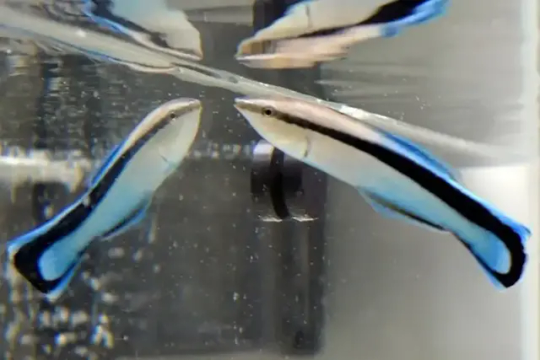
Fish size themselves up in a mirror to decide if they can win a fight
Cleaner wrasse use their reflection to build a mental image of their body size, which they use to compare themselves to rivals before picking a fight
Before deciding whether or not to fight another fish, cleaner wrasse check their own reflection in a mirror and size themselves up. Bluestreak Cleaner Wrasse (Labroides dimidiatus) are remarkably bright. These finger-sized coral reef fish were the first fish to pass the mirror test, a common assessment to see whether an animal recognises that the reflection is of its own body and not another animal. Researchers have now found that these wrasses use their likeness to construct a mental image of their body size, which they can compare to others...
Read more: https://www.newscientist.com/article/2447414-fish-size-themselves-up-in-a-mirror-to-decide-if-they-can-win-a-fight
youtube
#cleaner wrasse#wrasse#labroides#labridae#labriformes#fish#ichthyology#animals#nature#ocean#bony fish#animal#behavioe#science#Youtube
632 notes
·
View notes
Text
Balık, Böcek, Sürüngen vb Canlıların Bilinç Dünyaları
Balık, Böcek, Sürüngen vb Canlıların Bilinç Dünyaları 40 bilim insanı, bugüne dek iç dünyaları olmadığı düşünülen sürüngenler, balıklar, böcekler ve daha başka hayvanlar için de “bilinçli deneyim olasılığının” söz konusu olduğu, kuslar ve memelilerde bilinci destekleyici “güçlü bilimsel kanıtların” bulunduğu konusunda bir ortak bildiri imzaladılar. Balık, Böcek, Sürüngen vb Canlıların Bilinç…
#Ahtapotlar#balık#balıklar#bilinçli deneyim#böcek#Canlıların Bilinç Dünyaları#Corvus corone#Drosophila melanogaster#Elephas maximus#gerçekçi bir olasılık#kargalar#Labroides dimidiatus#Meyve sinekleri#Octopus bocki#Sürüngen#Sürüngen vb Canlıların Bilinç Dünyaları#üçlü bilimsel kanıtlar
1 note
·
View note
Text

CAN FISH RECOGNIZE INDIVIDUAL HUMANS IN THE WILD?
The ability to recognize individual humans is often associated with mammals and birds, yet research suggests that some fish are also capable of this cognitive feat. While diving in the Mediterranean Sea, a team of scientists observed something intriguing: every field season, they were followed by groups of local fish known as pargo or dorado, stealing food intended to reward other fish in their experiments.
In controlled experiments, wild saddled sea bream (Oblada melanura) and black sea bream (Spondyliosoma cantharus), were trained to follow a human diver to obtain a food reward. Remarkably, they can differentiate between dozens of individuals with high success rates, even when superficial features such as colour or brightness are altered. This suggests that their recognition is based on specific patterns rather than simple visual cues. Similar capabilities have been observed in cleaner fish (Labroides dimidiatus), which adjust their behaviour depending on whether they recognize a familiar diver, implying that this skill might have adaptive benefits in natural environments.

-Maëlan Tomasek (Max Planck Institute of Animal Behavior), one of the study's authors, next to a wild fish. The researchers found that wild fish start to follow humans for food and are able to identify individual divers by their clothing.
If fish in the wild can recognize individual humans, the implications extend beyond academic curiosity. Species frequently interacting with humans—such as those in ecotourism settings or research projects—may learn to associate specific individuals with positive or negative experiences. This has been observed in sharks, where some individuals appear to recognize divers who regularly feed or tag them, approaching more readily or avoiding interactions depending on past encounters. Understanding these cognitive abilities could inform conservation strategies by highlighting the impact of repeated human interactions on fish behaviour.
Despite these insights, much remains unknown about how fish process facial recognition and whether this ability is widespread across different taxa. Future research will need to examine whether this recognition occurs naturally in the wild without training and how it influences social interactions within fish populations. As we continue to challenge outdated assumptions about fish intelligence, it becomes increasingly clear that their cognitive world is far more complex than previously thought.
GIF: Trained fishes following diver
Reference (Open Access): Maëlan et al., 2025. Fish use visual cues to recognize individual divers. Biol. Lett.
#Spondyliosoma cantharus#Oblada melanura#fish#biology#science#sciblr#scienceblr#marine biology#ethology#behavior
1K notes
·
View notes
Text
mermay tanmeric 🌊🪸🦈🐠
⚠️ WARNING : GAY!! ⚠️
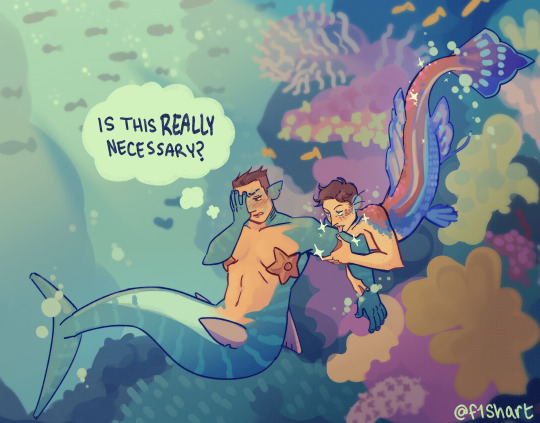
my only mermay contribution this year idc!!1 �� fish explanation under the cut
like in last year's post, tankiepoo is a buzzsaw shark (also known as the helicoprion, an extinct shark)... really he's a hybrid between that and a siren since that's what i imagine lyla as in this au but he looks much more like buzz + i haven't drawn her yet. lolsies omg also yes the sea stars are being used as trans tape ^_^
almeric… hes a freak. scientific name cirrhilabrus. also known as the fairy wrasse, cleaner wrasses in general are a type of fish that eat decaying matter or bad parasites off of sharks' bodies and avoid being eating themselves. symbiosis 💚.
HOWEVER. a big however, too. fairy wrasses are not cleaner wrasses, which is a misconception i had while drawing this.. you see cleaner wrasses are of the genus Labroides, but like i said earlier, the scientific name + genus of the fairy wrasse is Cirrhilabrus. they do not partake in the cleaning behavior.
make of that what you will in the context of this drawing........
#sims 2#ts2#mermay#tank grunt#almeric davis#shart#odds of almeric davis actually being a CLEANER were low already. fucking lazy ass twink#his ass is not cleaning 😂#tanmeric
88 notes
·
View notes
Text

Whitemouth moray (Gymnothorax meleagris) and juvenile Hawaiian cleaner wrasse (Labroides phthirophagus) in Hōnaunau, Hawai'i
40 notes
·
View notes
Text
I have tried to choose a wide distribution of animals representing many different clades, aiming for relatively intelligent species within their respective clade. There are only 12 poll options possible, so no asking “what about X?” Inevitably some species will have to stand in for a much broader class than others, e.g., the Humboldt squid for all cephalopods. (But the Humboldt squid is probably a good choice: they’re fairly gregarious and cooperative, unlike the octopus.)
Uplifted species will have the capacity for language, abstract thought, tool use, episodic memory, planning, and self-awareness. Their cognition may in other respects be radically different from our own, especially if they are not mammals.
69 notes
·
View notes
Note
may i request your kindest aquatic creature?
If a cleaner wrasse was a person, I feel like they’d be the friend that would always check up on you. The kind of guy who genuinely likes helping people.
Anyway, have one of these goobers.

You get a Bicolor Cleaner Wrasse
Labroides bicolor
25 notes
·
View notes
Text
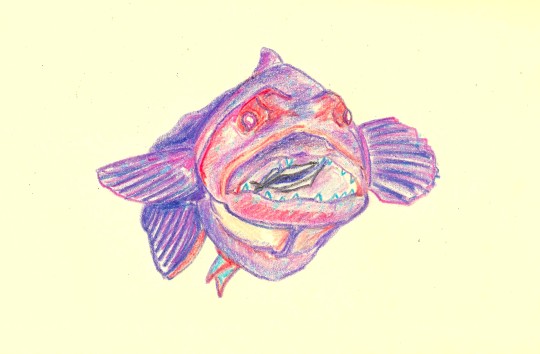
Fishuary 2024: Day 10 - Symbiotic relationship @fish-daily
For this one I chose a bluestreak cleaner wrasse (Labroides dimidiatus) and a roving coral grouper (Plectropomus pessuliferus). They're hanging out.
I keep telling myself that if I continue making one or two fishes a day I might catch up and do all of Fishuary. At this point it's still possible, just a matter of willpower and pacing!
34 notes
·
View notes
Text
According to a study done in 2019, cleaner wrasses were the first fish observed to pass the mirror test. The bluestreak cleaner wrasse (Labroides dimidiatus) is a tiny tropical reef cleaner fish. Cleaner fish have an adapted evolutionary behavior in which they remove parasites and dead tissue from larger fish. When put through the mirror test, using a benign brown gel injected into the skin of the fish, and resembling a parasite, the cleaner wrasse showed all the behaviors of passing through the phases of the test. When provided with a colored tag in a modified mark test, the fish attempted to scrape off this tag by scraping their bodies on the side of the mirror. Gordon Gallup believes the cleaner wrasses' behavior can be attributed to something other than recognizing itself in a mirror. Gallup has argued that a cleaner wrasse's job in life is to be aware of ectoparasites on the bodies of other fish, so it would be hyper aware of the fake parasite that it noticed in the mirror, perhaps seeing it as a parasite that it needed to clean off of a different fish. The authors of the study retort that because the fish checked itself in the mirror before and after the scraping, this means that the fish has self-awareness and recognizes that its reflection belongs to its own body. The cleaner wrasses, when tested, spent a large amount of time with the mirror when they were first getting acquainted with it, without any training. Importantly, the cleaner wrasses performed scraping behavior with the colored mark, and they did not perform the same scraping behavior without the colored mark in the presence of the mirror, nor when they were with the mirror and had a transparent mark. Following various objections, the researchers published a follow-up study in 2022, where they did the mirror test on a larger sample of wrasses and experimented with several marking techniques. The new results "increase[d] [the researchers'] confidence that cleaner fish indeed pass the mark test", although wrasses attempted to scrape off the mark only when it resembled a parasite.
This seems extremely dubious but I Want To Believe.
9 notes
·
View notes
Text
Day 3 of Fishuary!
Prompt: Wrasse
—
Ignore that I’m. Already behind. Had to choose a wrasse I see almost daily at work!
The blue-streak cleaner wrasse, labroides dimidiatus, my eternally beloved. These little guys are so important! They help out a bunch with our reef tanks, as not only do they keep our rays and fish clean, but they also eat parasites!
These dudes are so smart, they will not return to animals that snap at them while giving them a bath! Fish know better than to eat them as well. They’re our super good little janitors, love them for that. They’ve also been observed recognizing their own reflection; it’s not the best scale of intelligence for animals, but that’s a pretty interesting fact about them! These guys are pretty small as well, about two or three inches long at most, we love that here.
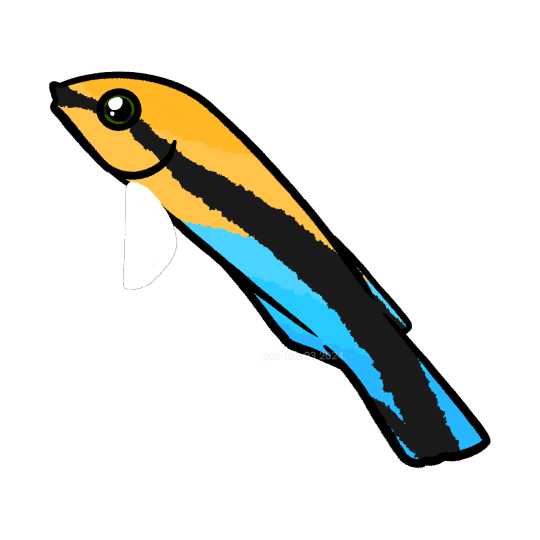
2 notes
·
View notes
Text
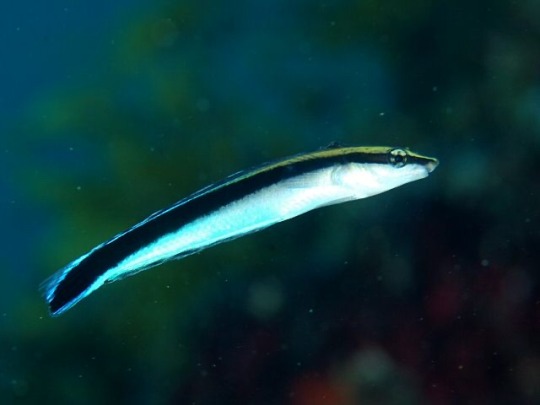
You get a Bluestreak Cleaner Wrasse
Labroides dimidiatus
When I was a kid I was “darn I just love when female characters pretend to be dudes for whatever reason” and the reason will not shock you in the slightest
70K notes
·
View notes
Text
Impacto do IMC nas taxas de sobrevivência ao tratamento do câncerSobrevivência à obesidade e à imunoterapia Um estudo da Universidade Metropolitana de Osaka com mais de 500.000 pacientes com câncer de pulmão descobriu que um IMC mais alto reduziu o risco de morte durante a imunoterapia e a quimioterapia. No entanto, essa tendência se inverteu em um IMC de 24. Para aqueles com IMC abaixo de 28, a imunoterapia teve um risco menor do que a quimioterapia, mas para pacientes com IMC de 28 ou mais, a imunoterapia aumentou o risco. 2 horas atrás Novas espécies fósseis de peixes descobertas na Austrália OcidentalNovo peixe fóssil no mapa da tectônica de placas Em um novo estudo publicado na Nature Communications, cientistas liderados pela Flinders University e especialistas do Canadá, Austrália e Europa descobriram um antigo peixe celacanto primitivo do Devoniano excepcionalmente bem preservado na remota Austrália Ocidental. Esta descoberta fóssil sugere que a tectônica de placas também influenciou significativamente a origem e a extinção dos animais. O fóssil foi chamado de Ngamugawi Whangarei. Sua descoberta preenche uma lacuna significativa no período de transição na história do celacanto entre as formas mais primitivas e outras formas mais "anatomicamente modernas". 44 minutos atrás O gás ozônio está reduzindo o crescimento das florestas tropicaisAs florestas tropicais são “sumidouros de carbono” vitais O gás ozônio está reduzindo o crescimento das florestas tropicais – deixando cerca de 290 milhões de toneladas de carbono não capturadas a cada ano, mostra uma nova pesquisa. O novo estudo calcula que o ozônio ao nível do solo reduz o novo crescimento anual em florestas tropicais em 5,1% em média. O efeito é mais forte em algumas regiões – com as florestas tropicais da Ásia perdendo 10,9% do novo crescimento. 21 minutos atrás Os peixes limpadores percebem precisamente o tamanho do seu corpoEspelho meu, espelho meu, no meu aquário, quem é o maior peixe de todos? De acordo com um grupo de pesquisa liderado pela Universidade Metropolitana de Osaka, um bodião-limpador-de-rastros-azuis (Labroides dimidiatus) verifica o tamanho do seu corpo em um espelho antes de escolher se ataca peixes que são um pouco maiores ou menores do que eles. A equipe relatou que o bodião-limpador conseguia identificar fotografias de si mesmo como ele mesmo, com base em seu rosto por meio do autorreconhecimento no espelho. 3 horas atrás Dieta pouco saudável em pais: doença cardiovascular em filhasTal pai, tal filha. Um novo estudo da Universidade da Califórnia, Riverside, explora como a hipercolesterolemia paterna afeta o desenvolvimento da aterosclerose na prole. O estudo descobriu que pais com dietas pouco saudáveis e ricas em colesterol podem causar um risco aumentado de DCV em suas filhas. Este é o primeiro estudo que encontrou esse resultado apenas em prole feminina. 3 horas atrás Uma das correntes oceânicas mais rápidas do mundo permanece notavelmente estávelModelos climáticos sugerem que atividades humanas podem enfraquecer a AMOC. Em um novo estudo, cientistas do Cooperative Institute for Marine and Atmospheric Studies (CIMAS), da University of Miami Rosenstiel School of Marine, Atmospheric, and Earth Science, do Atlantic Oceanographic and Meteorological Laboratory (AOML) da NOAA e do National Oceanography Centre reavaliam tensões induzidas por movimento medidas em um cabo submarino e reavaliam a tendência geral no transporte de FC inferido. Eles descobriram que a força da Corrente da Flórida, o início do sistema da Corrente do Golfo e um componente vital da Circulação Meridional do Atlântico global, ou AMOC, permaneceu estável nas últimas quatro décadas. 3 horas atrás Este dispositivo elástico e portátil alimenta a bateria usando o calor da sua peleUsando calor corporal para alimentar componentes eletrônicos Pesquisadores da UW desenvolveram um protótipo eletrônico
flexível e durável que pode coletar energia do calor do corpo e transformá-la em eletricidade que pode ser usada para alimentar pequenos eletrônicos, como baterias, sensores ou LEDs. Este dispositivo também é resiliente — ele ainda funciona mesmo depois de ser perfurado várias vezes e esticado 2.000 vezes. 5 horas atrás A IA mapeia sinais cerebrais para movimentos Maryam Shanechi e sua equipe na USC desenvolveram um novo algoritmo de IA chamado DPAD que pode separar padrões cerebrais ligados a comportamentos específicos, como movimentos de braço, de outras atividades. Este trabalho, publicado na Nature Neuroscience, melhora as interfaces cérebro-computador e pode ajudar pacientes paralisados a se moverem novamente. O algoritmo também pode ser usado no futuro para decodificar estados mentais. 12 horas atrás Fases da migração humana na Europa reveladas pelo modeloMigração humana aurignaciana na Europa. Pesquisadores da Universidade de Colônia desenvolveram o "Our Way Model" para rastrear a migração humana na Europa durante a Era Glacial. Ele mapeia quatro fases: propagação lenta, expansão rápida, declínio populacional e recuperação. O modelo mostra como as mudanças climáticas influenciaram a migração ao considerar o acesso a alimentos. Alguns humanos se adaptaram melhor a climas mais frios, mudando-se para novas áreas. 13 horas atrás Células mortas na inflamação desencadeiam sinais de curaOxilipinas e metabólitos. Um estudo da equipe do Prof. Kodi Ravichandran (VIB-UGent) descobriu que a piroptose, um tipo de morte celular, causa inflamação e cura do tecido. Publicada na Nature, a pesquisa sugere que as células piroptóticas liberam moléculas como a prostaglandina E2, que promovem a cura de feridas. Esse papel duplo da piroptose pode levar a novos tratamentos para feridas crônicas e doenças inflamatórias. 15 horas atrás Desvendando os mistérios da convecção e do movimento na superfície de...Revelando a superfície borbulhante da estrela R Doradus Astrônomos capturaram imagens detalhadas de uma estrela distante, R Doradus, usando o telescópio ALMA pela primeira vez. Essas imagens revelaram o movimento borbulhante de bolhas gigantes de gás quente na superfície da estrela, fornecendo insights sobre convecção, distribuição de elementos pesados e comportamento estelar. As observações expandiram nossa compreensão das estrelas e ofereceram um vislumbre do futuro, indicando como nosso Sol pode aparecer em cinco bilhões de anos, conforme ele faz a transição para uma gigante vermelha. 16 horas atrás Exercícios regulares levam a uma gordura abdominal mais saudávelExercícios de longa duração alteram a gordura abdominal Um estudo da Universidade de Michigan mostra que pessoas obesas que se exercitam regularmente têm gordura abdominal mais saudável e a armazenam de forma mais eficaz do que aquelas que não o fazem. Comparando 16 praticantes de exercícios de longo prazo com 16 não praticantes, os pesquisadores descobriram que os praticantes tinham tecido adiposo mais saudável, com mais vasos sanguíneos e menos células causadoras de inflamação, levando a um melhor armazenamento de gordura sob a pele e menos gordura. 17 horas atrás
0 notes
Text
Fish use a mirror to assess their strength before a fight
Fish use a mirror to assess their strength before a fight Fish check their reflection. Scientists have revealed how cleaners determine body size before fighting.A recent study by a team of scientists from Osaka Metropolitan University has shown that sponge fish (Labroides dimidiatus) use a mirror to estimate their size before deciding to attack other fish. via en.socportal.info
0 notes
Text
A declaration signed by dozens of scientists says there is “a realistic possibility” for elements of consciousness in reptiles, insects and molluscs.
Crows, chimps and elephants: these and many other birds and mammals behave in ways that suggest they might be conscious. And the list does not end with vertebrates. Researchers are expanding their investigations of consciousness to a wider range of animals, including octopuses and even bees and flies.
Armed with such research, a coalition of scientists is calling for a rethink in the animal–human relationship. If there’s “a realistic possibility” of “conscious experience in an animal, it is irresponsible to ignore that possibility in decisions affecting that animal”, the researchers write in a document they call The New York Declaration on Animal Consciousness. Issued today during a meeting in New York City, the declaration also says that there is a “realistic possibility of conscious experience” in reptiles, fish, insects and other animals that have not always been considered to have inner lives, and “strong scientific support” for aspects of consciousness in birds and mammals.
As the evidence has accumulated, scientists are “taking the topic seriously, not dismissing it out of hand as a crazy idea in the way they might have in the past,” says Jonathan Birch, a philosopher at the London School of Economics and Political Science and one of the authors of the declaration.
The document, which had around 40 signatories early today, doesn’t state that there are definitive answers about which species are conscious. “What it says is there is sufficient evidence out there such that there’s a realistic possibility of some kinds of conscious experiences in species even quite distinct from humans,” says Anil Seth, director of the Centre for Consciousness Science at the University of Sussex near Brighton, UK, and one of the signatories. The authors hope that others will sign the declaration and that it will stimulate both more research into animal consciousness and more funding for the field.
Blurry line
The definition of consciousness is complex, but the group focuses on an aspect of consciousness called sentience, often defined as the capacity to have subjective experiences, says Birch. For an animal, such experiences would include smelling, tasting, hearing or touching the world around itself, as well as feeling fear, pleasure or pain — in essence, what it is like to be that animal. But subjective experience does not require the capacity to think about one’s experiences.The consciousness wars: can scientists ever agree on how the mind works?
Non-human animals cannot use words to communicate their inner states. To assess consciousness in these animals, scientists often rely on indirect evidence, looking for certain behaviours that are associated with conscious experiences, Birch says.
One classic experiment is the mirror test, which investigates an animal’s ability to recognize itself in a mirror. In this experiment, scientists apply a sticker or other visual mark on an animal’s body and place the animal in front of a mirror. Some animals — including chimpanzees (Pan troglodytes)1, Asian elephants (Elephas maximus)2 and cleaner fishes (Labroides dimidiatus)3 — exhibit curiosity about the mark and even try to remove it. This behaviour suggests the possibility of self-awareness, which might be a sign of consciousness.
In an experiment with crows (Corvus corone)4, the birds were trained to make a specific head gesture whenever they saw a coloured square on a screen, a task they carried out with high accuracy. While the birds performed the task, scientists measured the activity in a region of their brain associated with high-level cognition. The birds’ brain activity correlated with what the birds were reporting, not with what they were actually shown. This suggests that they were aware of what they were perceiving, another potential marker of consciousness.
Invertebrate inner lives?
Another experiment showed that octopuses (Octopus bocki)5, when picking between two chambers, avoided one where they had previously received a painful stimulus in favour of one where they were given an anaesthetic. This suggests that they experience and actively avoid pain, which some researchers think indicates conscious experience.
0 notes
Note
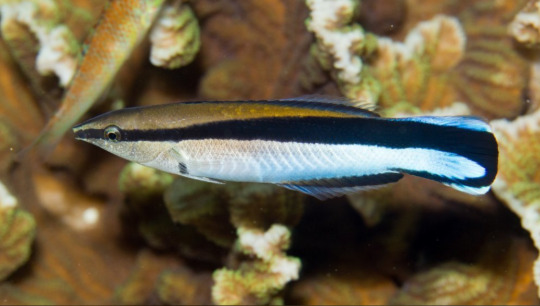
You get a Bluestreak Cleaner Wrasse
Labroides dimidiatus
Enchant penis?
Your penis has been inflicted with Curse of Vanishing. Never ask me for anything again.
2K notes
·
View notes
Text
Manual Plasma Extractor Manufacturers
Are you looking for high quality manual plasma extractors? Look no further than Laboid International! We have the latest technology and high quality materials to design and manufacture top-notch products. As one of the most dedicated Manual Plasma Extractor manufacturers in Kasauli, Himachal Pradesh, we consistently exceed the expectations of leading brands. Trust Laboid International for all your plasma extraction needs! For reliable manual plasma extractors, make the smart choice by choosing Labroid International now!

0 notes